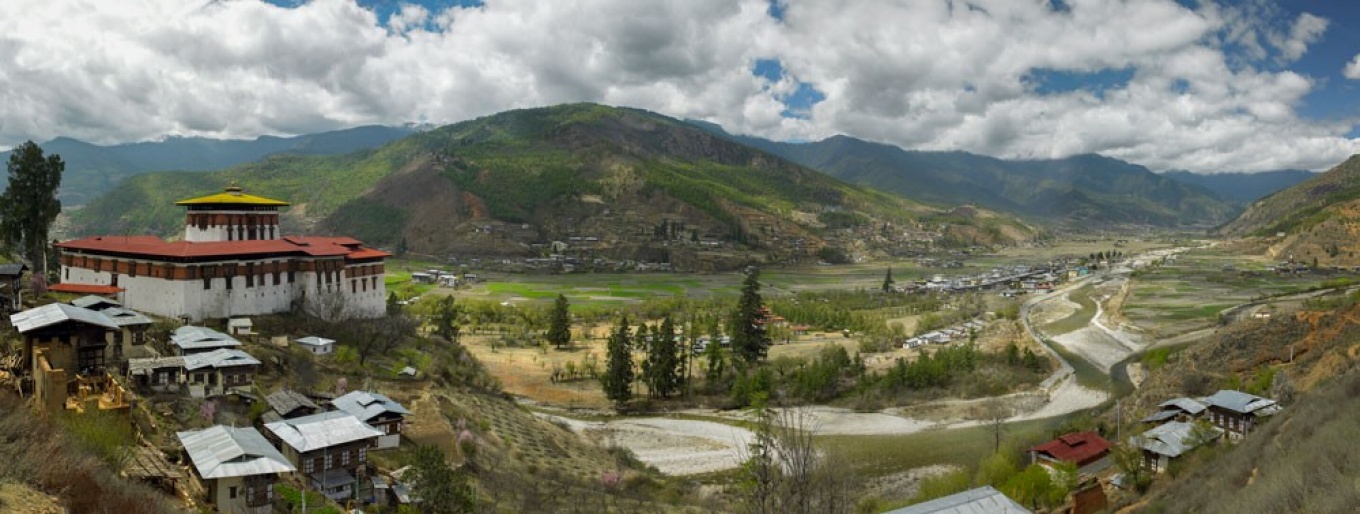

Published October 22, 2019 This content is archived.
Creating learning pathways for environmental science and decision-making
GSE professor collaborates to start a museum in Bhutan
Sameer Honwad, assistant professor from the Department of Learning and Instruction, is working with partners from the Royal Thimpu College (RTC) in Bhutan to start a museum that focuses on highlighting socio-scientific issues such as environmental sustainability and climate change. This idea was derived from a collaborative project titled “Weaving Strands of Knowledge: Connecting Culture and Science to Climate Change” funded by the American Association of Museums. As part of this project, students from RTC and the University of New Hampshire (UNH) travelled to each other’s communities in the summer of 2017. During this time, they collected audio stories from locals who work with the land in New England and Bhutan.
The youth from the United States and Bhutan gathered, listened and edited narratives that represented how the changing climate is impacting local and global landscapes, wildlife, hydrology, farming and food sources in both regions. After sharing these stories, students, along with the museum staff and other project members, created an exhibit on climate change, which was displayed in the Montshire Museum of Science in Vermont and the Folk Heritage Museum in Bhutan.
Each student in the program connected the narratives that they heard to their own lives in different ways. Along with the students, the faculty at UNH and RTC also had an opportunity to collaborate and understand how people living in different cultures merge formal, informal, traditional and Eurocentric knowledge systems to make decisions about environmental issues faced by the communities.
“Research has shown that successful environmental decision-making in communities across the world involves combining both traditional and Eurocentric science knowledge,” says Honwad. “This project was an opportunity for us to collect further evidence about how people situated in different cultures merge knowledge from several sources while making decisions about environmental issues faced by their communities.”
This project sparked interest in starting a museum in Bhutan. The goal of this new museum is to engage communities around issues that intersect environmental science and anthropology. The museum will use tools such as oral history, storytelling and other participatory design methods to highlight socio-scientific issues in Bhutan. “We are trying to figure out how the future generation can best learn about environment problem solving in their communities and we are doing that through tools such as storytelling,” says Honwad.
Before he was a professor conducting research, Honwad worked in the New York Hall of Science. He shared his experience about visitors' engagement with museum exhibits and their designs. In one such case, he observed how visitors interacted with the Mars rover exhibit next to his work desk. The Mars rover is a motor vehicle that travels across the surface of planet Mars. “Ideally, the exhibit was made to show the kids how to move the rover around, take photos, examine the photos and then discuss the photos,” says Honwad. “However, 99% of the kids that engaged with the rover exhibit would go up to it, press a bunch of buttons, move the handle around, take random photos and hardly ever bothered to have a conversation about the photos.”
Drawing on such observations, Honwad wants the museum that is being designed with local partners in Bhutan to have exhibits that will engage youth and make them want to learn and connect science to their everyday lives. He also has a master’s degree in ecology and is very interested in connecting environmental science to people’s everyday lives. “When I started working in the field of ecology, I was really interested in how we get other people to understand ecosystems and think about environmental conservation,” says Honwad. “That’s what brought me to the learning sciences and personally, I am interested in how people learn about issues concerning environmental science and conservation.”
Tuesday News Briefs feature the stories of the Graduate School of Education faculty, students and alumni who are engaged in their communities and making an impact through their hard work, dedication and research initiatives. If you have a story to share, please email us with the details for consideration as a future news feature.